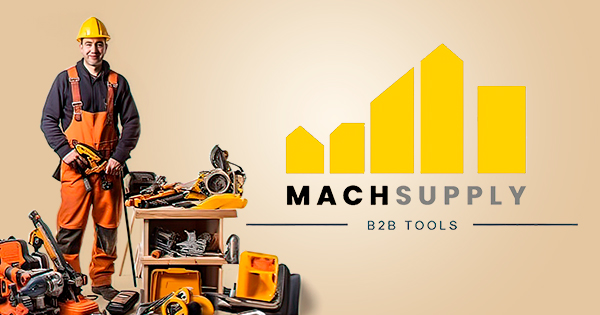Up to the next level with gamification
Everyone loves a good game. Why wouldn’t you?! It’s rewarding and good for your self-esteem to vanquish a final foe or win 100% of the trophies in your favourite Role Playing Game. But gaming also lets us cool off, learn and discover, with new worlds quite literally at our fingertips.
Brands know this all too well, and now many are doing their best to encourage consumers to use a product or service with the help of game dynamics. Just think about TikTok challenges. Brands have found the perfect way to engage with their audience by inviting people to reproduce a fun challenge and rewarding the best participants… Just as you’re rewarded when you level up after finishing a quest in a game.
As the pandemic has turned our working world upside down, some companies are now even considering gamification to connect with their current and future employees. This is all part of the new hybrid way of working. Fostering a feeling of belonging among employees has never been so important to motivate and engage with them, while they are working from home. Gamifying company processes could be a valuable tool.

Game on!
First things first: what is gamification? According to Nick Pelling, who first used the term , it’s all about using “game dynamics and methods in a non-leisure context”. It’s a proven marketing technique that is frequently used to get customers to acquire a product, service or app. But now, companies are starting to seize this opportunity to communicate and engage with their teams, especially for recruitment and training.
Gamifying company processes is a good way to foster engagement, innovation and self-development within teams and give a feeling of belonging, value recognition and personal achievement. Universally popular games tend to provoke strong and authentic emotions and could have a lot of potential to increase motivation and engagement. Providing ‘play time’ is a way for companies to create a sense of community, while showing that they care about their employees. Game dynamics can also help a business innovate on processes and make them less onerous.
Levelling up
Gamifying company processes can lead to positive outcomes. But the systems need to be attractive enough for people genuinely want to play and not have to play. How can you do this? The game quality comes first. The gameplay needs to be good and intuitive. The design needs to be attractive and immersive. And overall the game needs to stimulate and allow the “player” to offload pressure as every good game would.
In concrete terms, this means that game mechanisms and goals should be easy to find and understand. The goals should be easily measurable and reachable to give the player a continuous feeling of improvement. This can be done by splitting bigger objectives in smaller tasks, including short and long-term encouragement, feedback or giving rewards to the “players”. Team competitions can also help boost team spirit.
Companies also need to think about what’s in it for the “player”. The first thing company process gamification brings to the employee is motivation. Particularly in these Covid times, when we have fewer chances to connect with colleagues, some people feel isolated and rudderless. Adding a game layer to the work environment is a great way to help teams reconnect and motivate each other.
Second, gamifying a job-related task such as learning how to use a new tool or following training, can help employees to complete tasks faster and to learn more effectively. This is good for performance and for employees’ self-esteem, as they feel more efficient.
Finally, gamifying company processes can help HR teams to recruit the right talent and let employees understand better how they work in teams and improve their performance. Quick questionnaires to help employees to know what they are good at or how they position themselves in a group are appealing tools for understanding each other better. In terms of recruitment, games are a great way to attract talented people through fun hiring processes, making a welcome addition to the traditional methods of CV scanning and interviews.

Winning streak
But how are companies applying these mechanisms to their company processes in reality?
Many are already improving training with game dynamics. Deloitte took this very seriously in its analysts’ onboarding processes. With its game, “The Chosen Analyst”, new recruits had to deal with a zombie apocalypse and find a cure to save the world. Through the whole game, they had to make the right choices and complete a series of challenges while learning all the basics of the tools that are used extensively at Deloitte.
In the same vein, Galderma wanted to help its sales staff gain experience (or XP, if you’re a gamer). It created a whole gamified training environment where employees could create an avatar, answer quizzes and participate in situational role-plays. Taking part was voluntary, but it was appealing enough for 92% of the sales team to get stuck in.
Gamification is also a great tool to teach clients. Extraco, the central Texas bank, created a whole questionnaire its clients could easily answer. A virtual character, James, showed them all the Extraco services and features in a fun way, sharing tips on how to change their banking habits in order to win a lower monthly fee.
Recruitment is vital to every company. Marriott created a complete game on its Facebook career page called My Marriott Hotel, where applicants could put themselves in the shoes of a hotel manager. They could then click a “Do it for real” call to action and apply for the job.
Google used a game, more precisely a riddle, to pre-select good profiles. The riddle was shared on a billboard and those who could solve it just had to type the result and .com to reach a website with another challenge to resolve. Funnily enough, at this point, no one would know that Google was behind all this. Eventually resolving the equation led to a Google Lab web page which asked the potential applicants for their CVs.
Gamification is already a major tool in marketing and is starting to bring real changes to company processes. In years to come, some experts wonder whether gamification might even become a strategic management tool.
At Emakina, we want to help you level up and bring a bit more fun to your processes. Just as with Galderma, Extraco and many others, our teams of experts are here to help you engage better with your teams and customers. See you at the next level.
Our recent blog posts
See all blogs-
How is AI’s synthetic data enhancing User Experience Research? Technology

-
Web3.AI Rising : How new technology can add value to your business

-
How generative AI helped us create an e-commerce app – with personalised content – in just 2 weeks Technology

-
Can you build a foodie app in 3 days using Generative AI? (Spoiler alert: yes!)

